Kevin and I have been in New Zealand for nearly 2 weeks and the action hasn’t stopped. He’s soon going to think that I’m TRYING to kill him. But who would keep this blog up and running? Three words: ultimate job security!
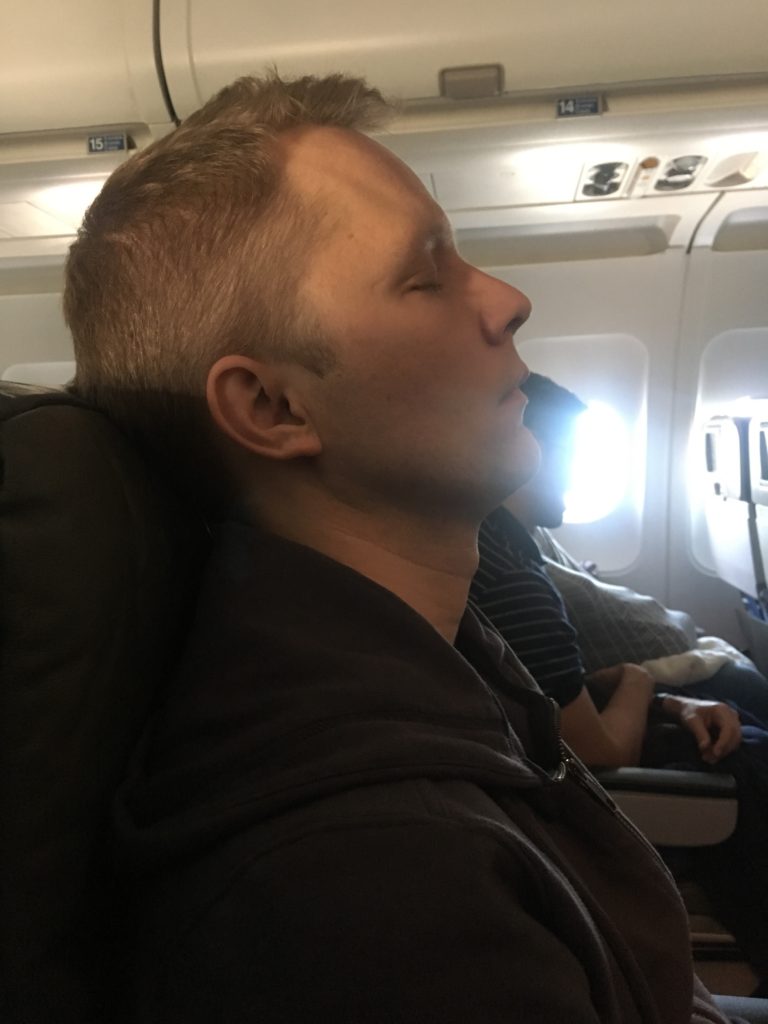
Kevin is totally geared for New Zealand. His last moment of sleep on the airplane.
Anyway, after 3-adrenaline filled days in Queenstown, we drove nearly 4 hours south to Dunedin, the second largest city on the South Island (after Christchurch) best known for its Scottish heritage and a lively student population at the University of Otago. But that wasn’t the main draw for us. It was to join the highly-regarded Elm Wildlife Tour — one of the most unique tours that you can experience in New Zealand.

Stopping along the 4-hour drive to Dunedin. I can’t help but get a shot with the giant fruit
They offer a variety of tour options, but we went with their most popular trip — the Peninsula Tour. You’ll get up close to rare yellow-eyed penguins, Hooker’s sea lions, albatross, New Zealand fur seals and little blue penguins within their private wildlife conservation sanctuary. We’ve seen plenty of sea lions in California. But I can certainly say we were never this close to them… I mean, right on the beach and at one pointing sprinting away from one!
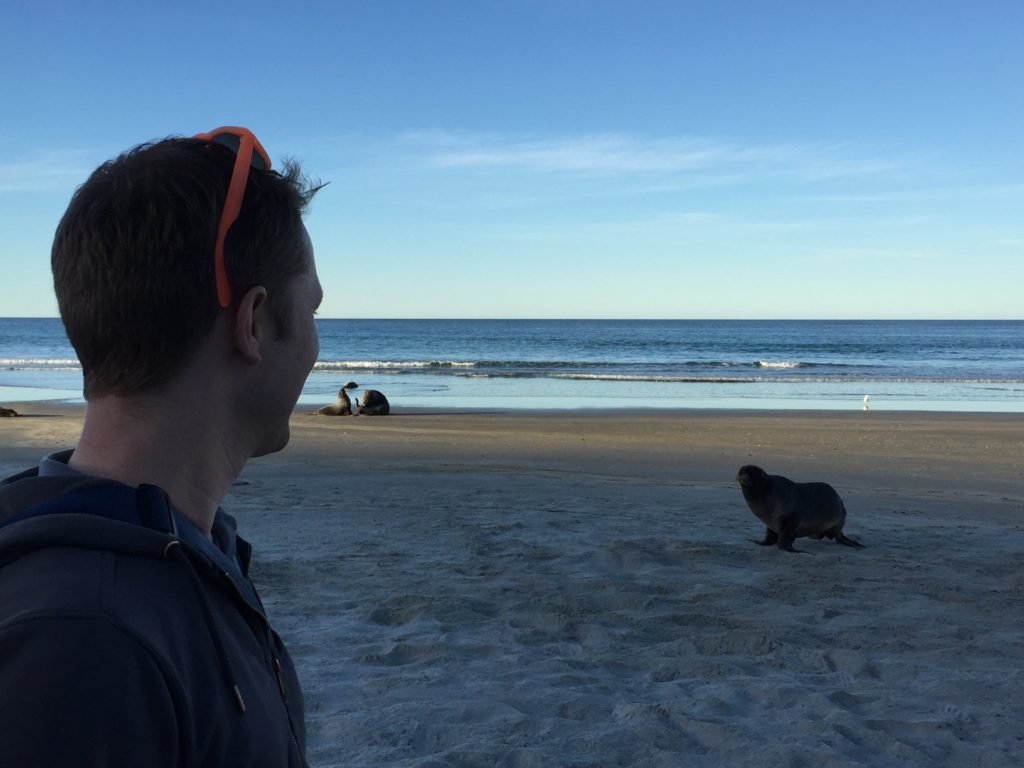
It’s a face-off. Kevin, I’m pretty sure that the sea lion is going to win.
We’ll take you along our incredible tour across the Otago Peninsula, which lasted about 6 hours (but felt a lot shorter!).
Part 1: The Journey to the Remote Otago Peninsula
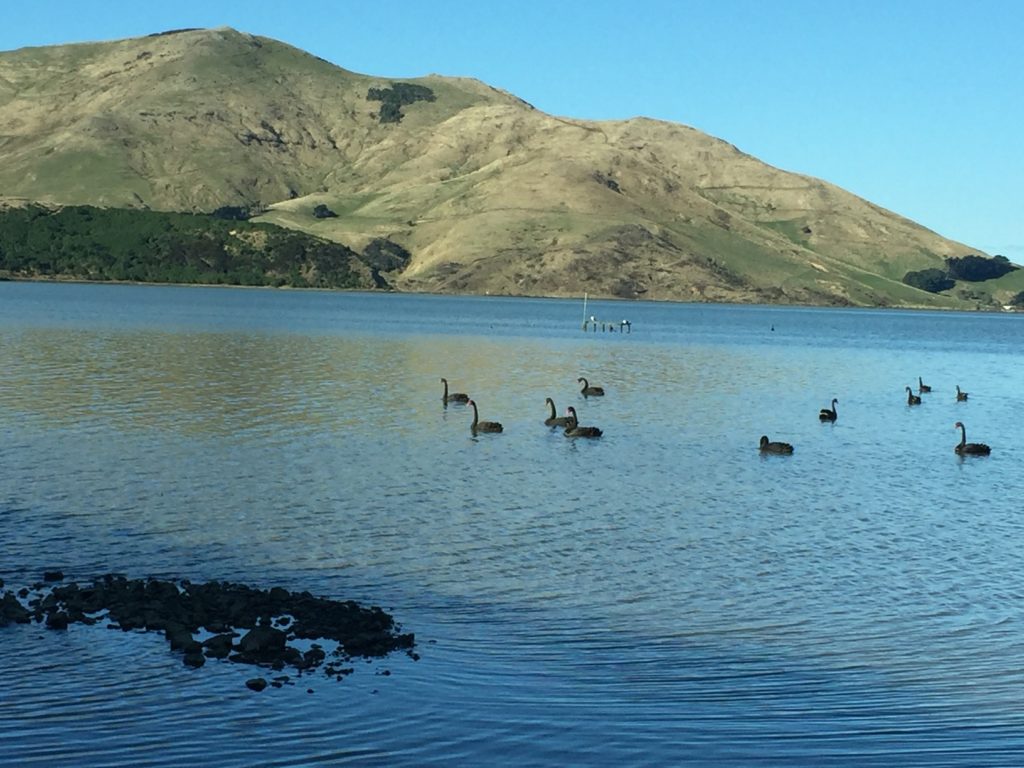
Black Swans, introduced from Australia, can be regularly seen on the trip.
We met our guide Shawn at our lovely hotel, the Bluestone on George (a place we highly recommend). Shawn has been with Elm Wildlife Tours for 17 years, so he certainly knows his stuff. His passion for the subject runs deep and he even got his university degree in animal science. Kevin and I hopped in the back of the passenger van and were off to the Otago Peninsula with 6 others passengers. So a pretty small group — and exactly how the tour is set up for a personalized experience.
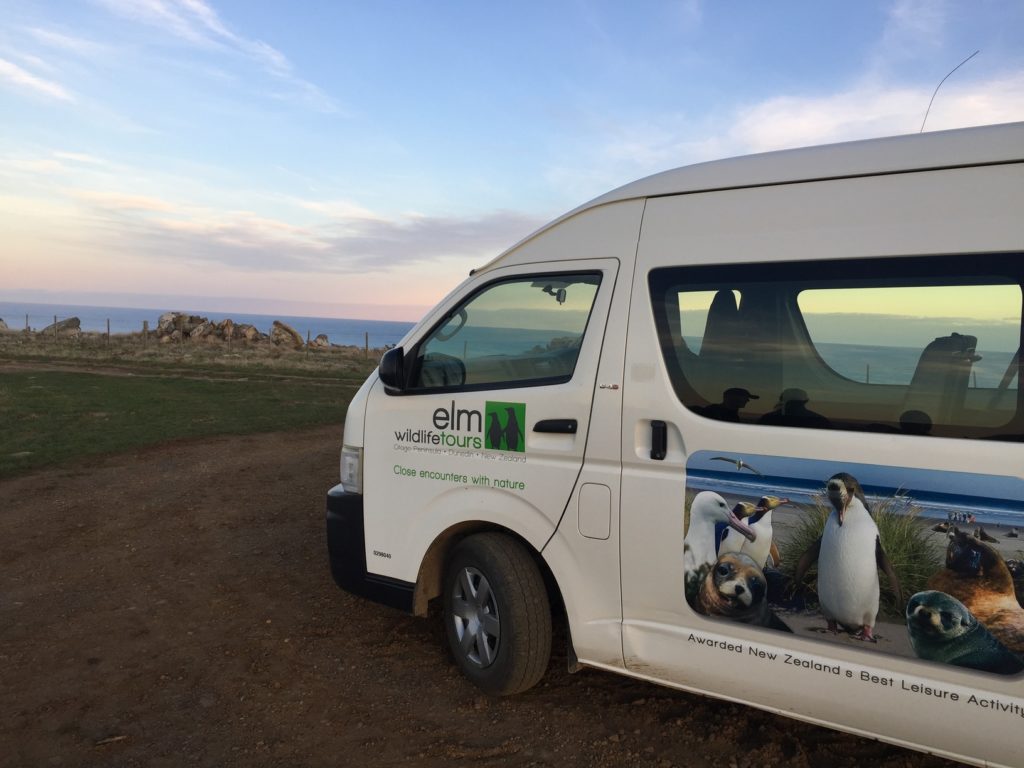
It’s all small group tours with Elm Wildlife Tours inside their comfortable vans.
As we drove along the peninsula, Shawn pointed out animals that I would have easily missed. Seriously, I had no idea how he spotted some of these birds since it took nearly everyone a good 3-4 minutes to see them. One of the biggest issues that impacts New Zealand’s native animal population traces back to the 1860’s when they started introducing predators. Unlike Australia, New Zealand’s wildlife was pretty tame and weren’t used to being attacked, particularly its iconic kiwi bird. One bird that is doing very well though is the Pukeko, a large, blue-purplish, wetland-dwelling bird. And like on cue, one popped out alongside the road.
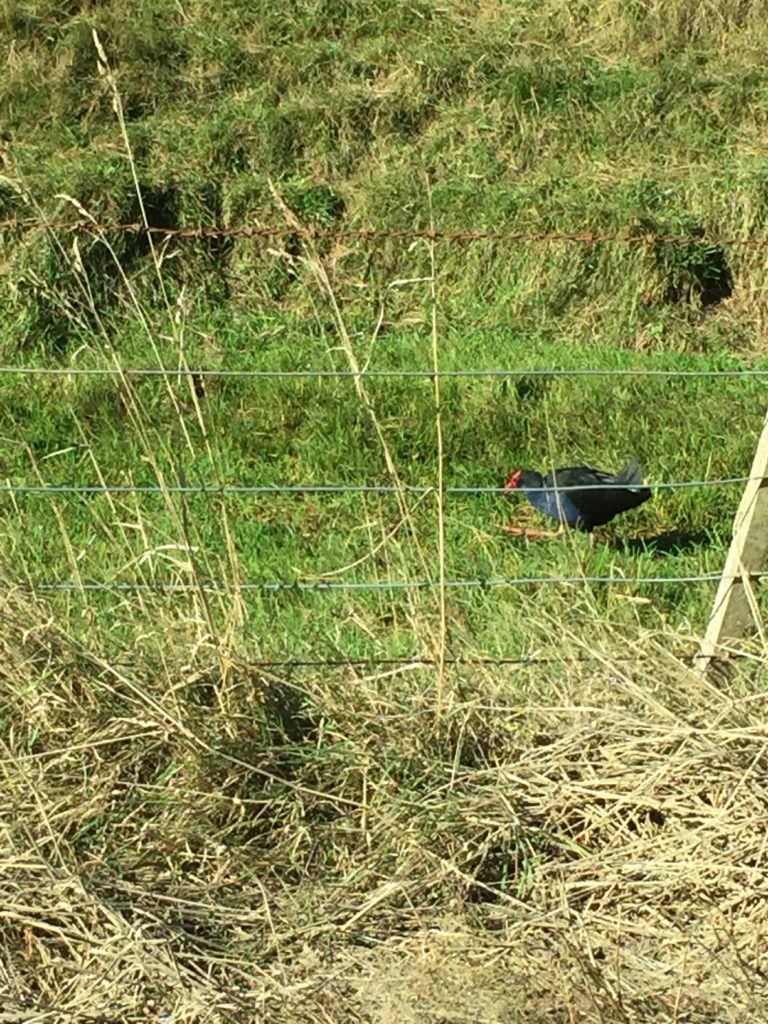
A Pukeko hanging out alongside the road. Luckily, your guide will spot these hidden creatures for you.
We did some more bird spotting, which made me realize just how horrible of a bird watcher I’d make. Shawn pulled over and literally pointed directly at a Little Owl, or German Owl, in the tree. It took me about 5 minutes to finally spot it. Sadly, I sometimes have a difficult time even finding elephants in a zoo! Oh well, I eventually saw it. From there, we made a quick detour to check out some baby sea lions. These little guys were adorable. And while they looked like they wanted to eat each other at times, they were actually playing.

I loved watching the non-stop energy of these little sea lions playing.
Part 2: It’s a Bird, It’s a Plane… No it’s an Albatross

Our tour also included a stop to see albatross at the Royal Albatross Center at Taiaroa headland and other wildlife around Otago peninsula bay’s and lagoons. Depending on the time of year, you’ll have better luck than others. We were here in May, and saw only one albatross far in the distance. You’ll know it’s an albatross — and not a seagull — from its large wingspan and its long glides over top the ocean.
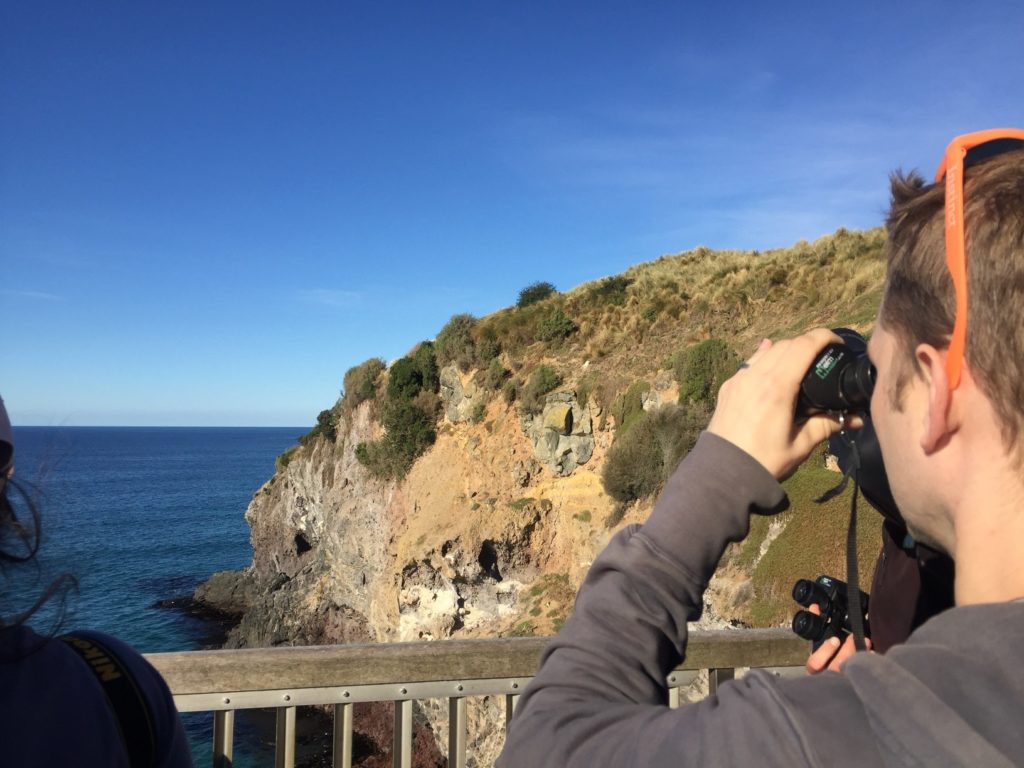
Kevin tries his luck looking for the albatross in the distance. Elm Wildlife Tours provides binoculars to help spot them.
I visited this same spot with Elm Wildlife Tours over 16 years ago and as the kiwis say, there were “heaps of them.” But my trip was towards the end of February. And we learned that the center can have upward of over 150 albatross. However, most head to South America for the winter. While we didn’t see many on this trip, we enjoyed learning more about them at the center. Normally albatross breed on remote islands and spend at least 85 percent of their lives at sea. But the Royal Albatross Center is home to the only mainland breeding colony of Royal Albatross in the world. For an additional cost, Elm Wildlife Tours can also arrange tours with the center to view its breeding area.
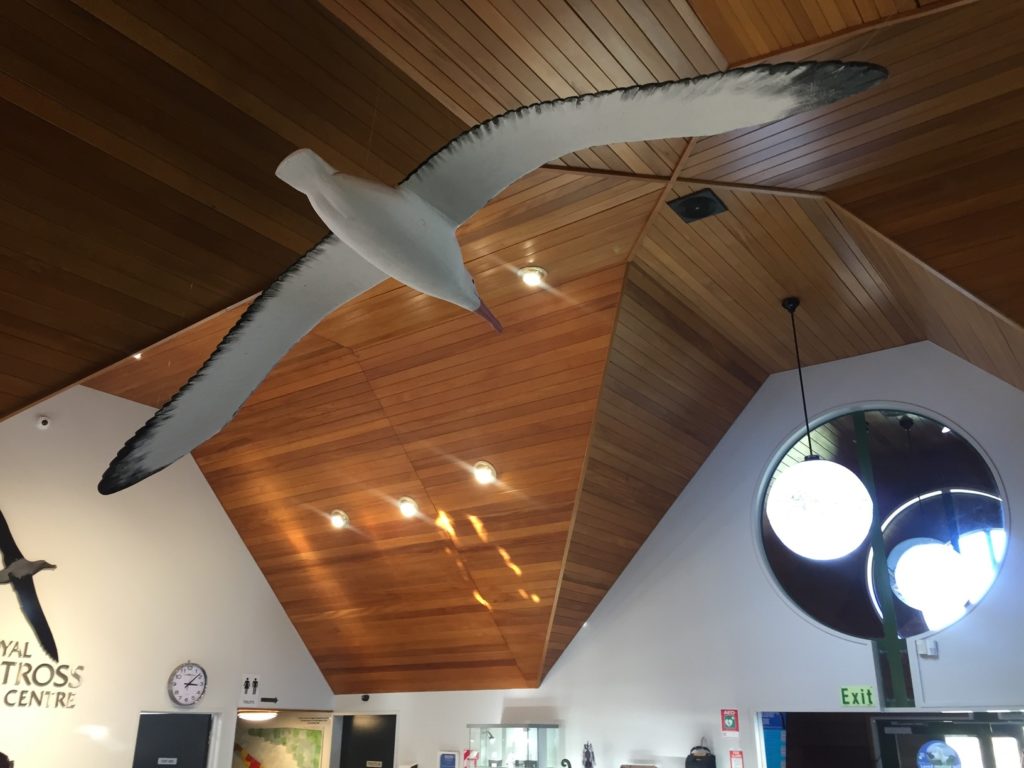
You can check out a life-size albatross inside the center. These are the largest seabirds in the world with a wingspan of nearly 10 feet. That’s a lot bigger than me!
Renowned ocean wanderers, albatross travel incredible distances from their breeding grounds to feed. Their latest estimates show that it flies more than 118 miles in a given year. Now that’s going the distance!
Part 3: Penguin Party! Our Favorite on the Otago Peninsula

Yellow-Eyed Penguins are the rarest in the world’s 18 species. Like the Hooker sea lion, these penguins are found only in New Zealand. Shawn took us to Elm Wildlife’s private land — the only tour operator to have such access. It was here that we learned about their efforts to help keep the penguin population strong. Each of the guides are trained to set out traps to capture feral cats and stoats (aka weasels). It’s a big problem in New Zealand and cats aren’t required to be neutered or contained. Mix this with the fact that New Zealand has the highest cat ownership in the world, and you’ll see the problem. Stoats were introduced into New Zealand to control introduced rabbits but are now a major threat to the native bird population. Elm Wildlife is making an effort to combat this problem and has seen some positive effects with their efforts.
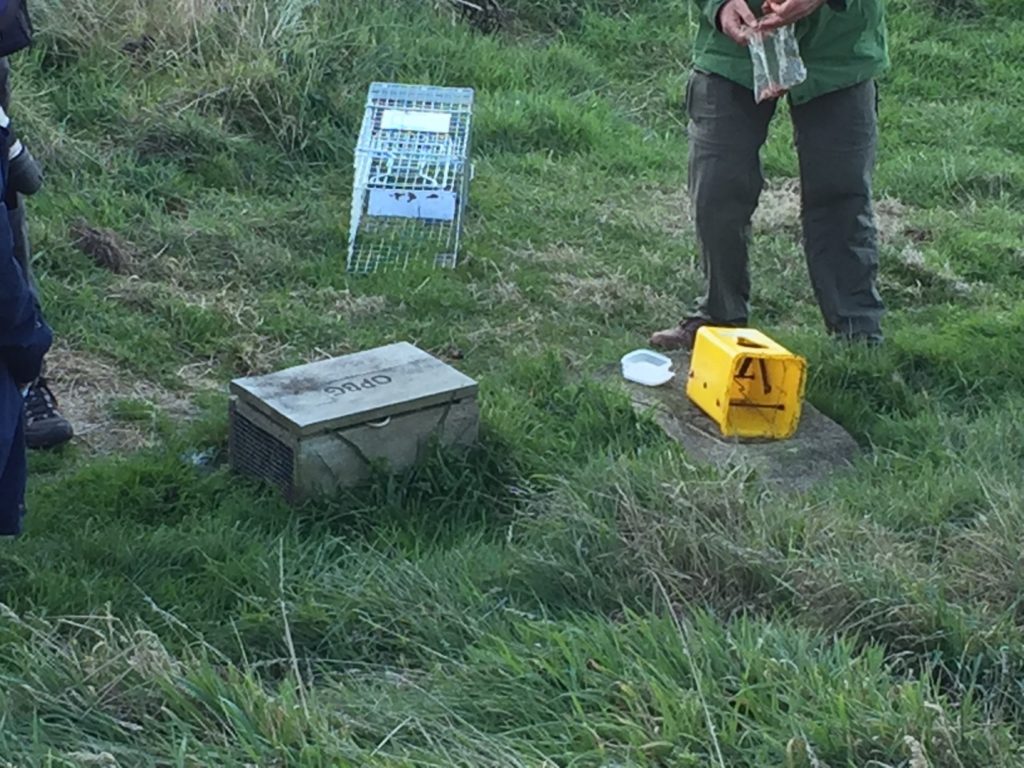
Watching the traps get re-set to help capture feral cats and stoats.
We made our way down the hill to the sandy beach and it didn’t take long to see the little penguins waddling up and moving as fast as their little feet could possibly go to avoid all the sea lions.
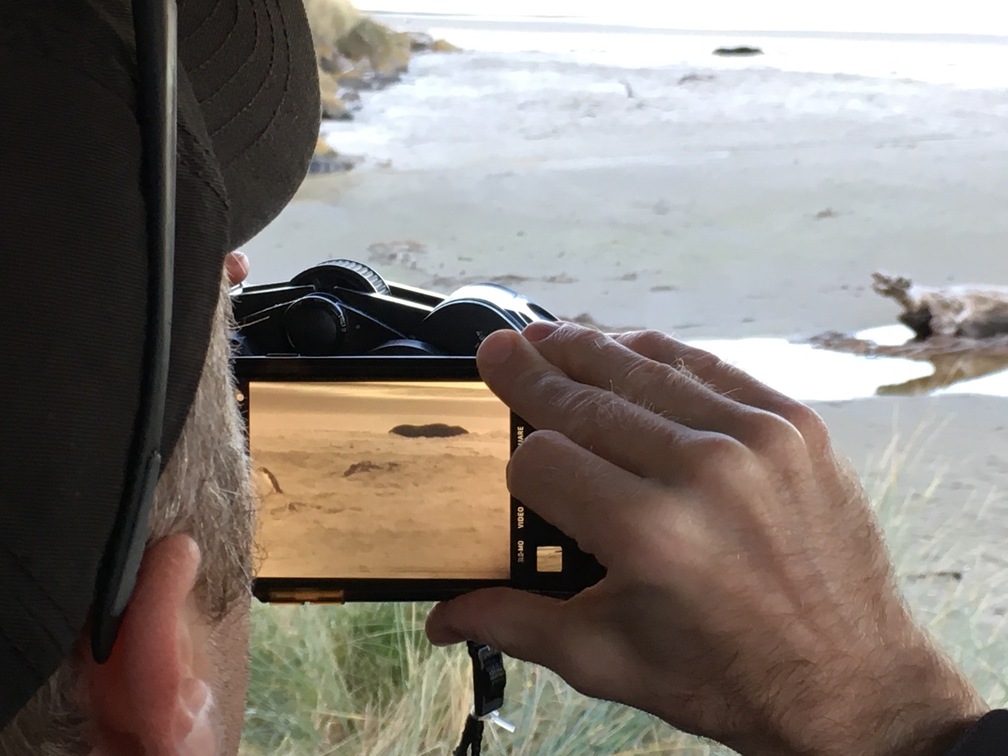
I took nothing short of about 80 pictures of these little penguins running up. They are so cute.
The penguins tend to go out to sea during the day to feed and return to their roosting areas in the late afternoon. Unlike other species of penguins, these guys don’t nest in tight colonies as they are very shy and prefer to nest in coastal vegetation and forest. As we walked through the forest path, a penguin popped up on our trail on several occasions.
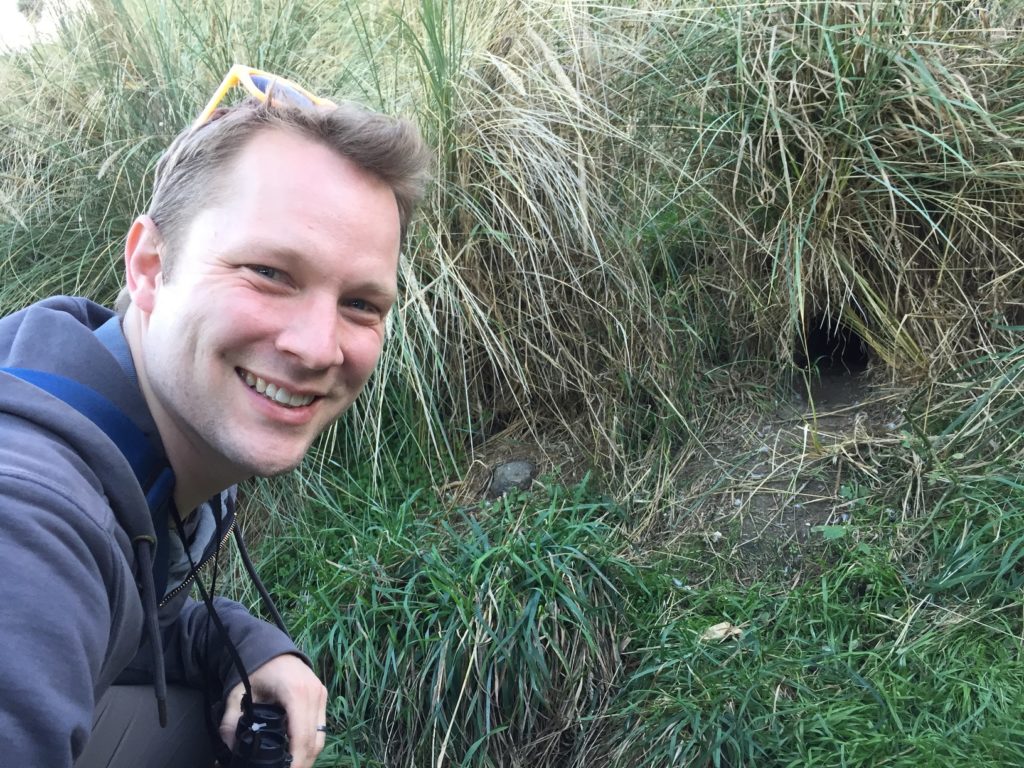
Kevin peeks inside one of the penguin nests that actually had a penguin inside staring out at us!
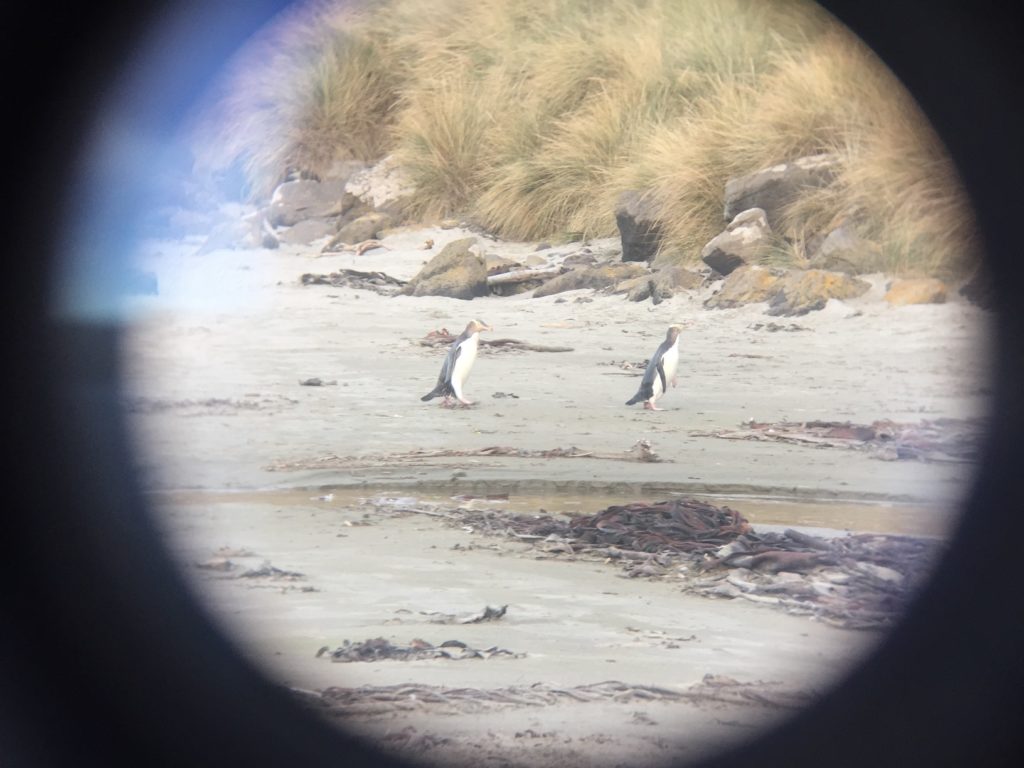
Penguins waddling across the beach. I could watch this all day.
Part 4: Running of the Hooker Sea Lions
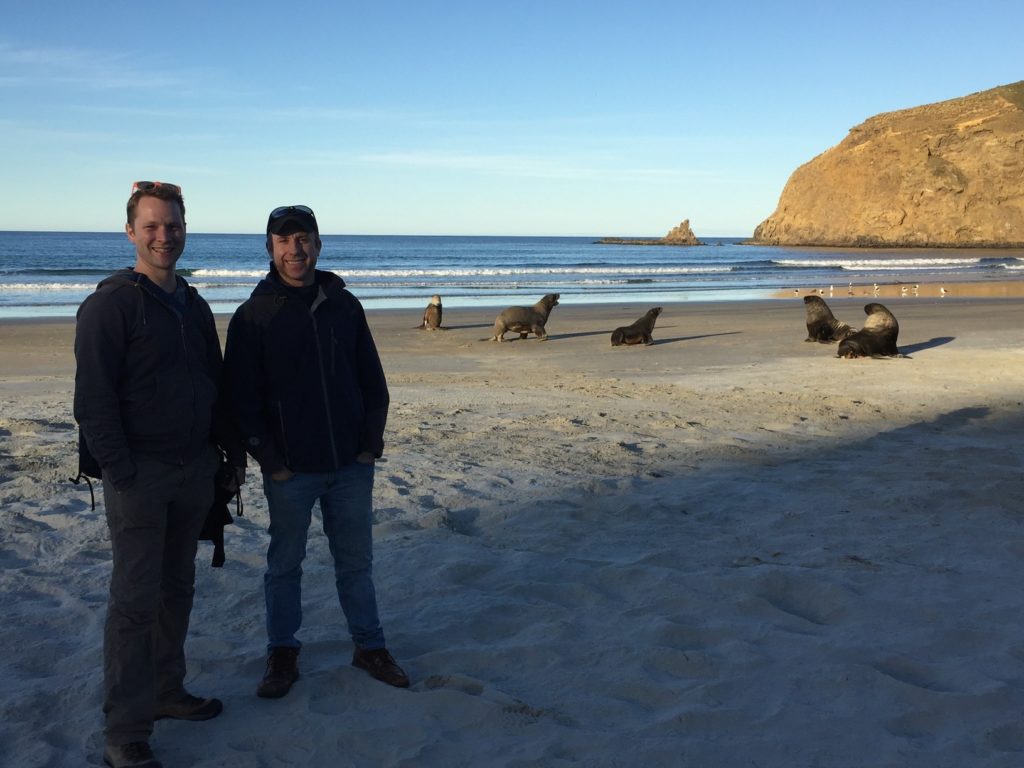
I was only SLIGHTLY nervous as we had our backs to these giant creatures. But where else can you get this close safely?
After checking out the penguins, we watched the Hooker sea lions lounge around the beach and at times sprint in our direction. These are the rarest of the world’s five species and are making a comeback to mainland New Zealand after being eliminated by Maori hunting centuries ago. Today, they exist primarily in this area and the Catlins (an area in the southeastern corner of the South Island). These are some curious creatures and soon enough one came flopping towards us. And it was an all out sprint! More than likely, he just wanted to play. But they can grow up to nearly 10 feet in length and weigh over 880 lbs. So yeah, guess who’s going to win in this wrestling match?

Part 5: Lounging Around with the New Zealand Fur Seal

Before heading out, we followed Shawn to the rocky coast to see the last animals — the New Zealand Fur Seal. These were hunted to near extinction by European seal hunters. But there has been a large population increase over the past few years. Breeding season is November and December and you’ll see the large males showing up and defending their territory. While the guys are away, it seems like a pretty calm and relaxing place with the babies playing and moms sleeping.
Last Part: All Good Things Come to an End
We saw so many animals in such a short amount of time. It was hard to believe that it was going on 9 PM. And Kevin didn’t fall asleep once. Okay, maybe a little on the way back but he can’t help himself in a moving vehicle. We said our goodbyes to Shawn and were plenty hungry so we headed into town and grabbed a comfy seat on the couches at the Gaslight Restaurant. While you ride in a van for part of the trip, there is still plenty of walking and we were ready for dinner. A great meal to end a perfect day in Dunedin.

THE LOW DOWN:
- Peninsula Encounters is Elm Wildlife’s most popular tour.
- All daily wildlife tours include a viewing of the Otago Peninsula with penguin, fur seal and sea lion conservation area and with options to join an Albatross breeding area tour or a one hour cruise. All options are the same duration.
- Be sure to make advanced reservations as tours sell out.
- Cost: $80 USD for adults, $73 for students and free for infants.
- Tours typically pick up around 1 PM at most hotels in and around Dunedin. Tours last approximately 6-6.5 hours in the summer and 5-5.5 hours in the winter.
- Tours are available all year (except Christmas and New Year’s Eve)






No Comments, Be The First!